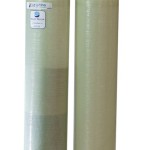Fabric Shower Curtain Liner: Preventing Mold and Maintaining a Clean Bathroom
Shower curtain liners are fundamental components of a bathroom, serving the critical function of containing water within the shower or bathtub area. While traditionally made of plastic, fabric shower curtain liners have gained popularity due to their aesthetic appeal, durability, and perceived eco-friendliness. However, regardless of the material, the warm, humid environment of a bathroom can promote mold and mildew growth on shower curtain liners. This article will examine the factors contributing to mold growth on fabric shower curtain liners, explore strategies for preventing this growth, and outline methods for cleaning and maintaining these liners.
Understanding Mold Growth on Fabric Shower Curtain Liners
Mold is a type of fungus that thrives in damp, nutrient-rich environments. Bathrooms, with their frequent exposure to water and organic matter (such as soap scum and shed skin cells), frequently become breeding grounds for mold. Fabric shower curtain liners, in particular, are susceptible because the material readily absorbs and retains moisture. The longer the fabric remains damp, the greater the opportunity for mold spores to germinate and colonize. The type of fabric also plays a role. Fabrics like cotton, while aesthetically pleasing, are more porous and slower to dry than synthetic alternatives, making them more prone to mold growth. Additionally, the lack of adequate ventilation in many bathrooms further exacerbates the problem by slowing down the drying process.
Specific types of mold commonly found in bathrooms and on shower curtain liners include *Aspergillus*, *Cladosporium*, and *Penicillium*. These molds can cause a range of health issues, particularly for individuals with allergies, asthma, or weakened immune systems. Exposure to mold spores can trigger allergic reactions, respiratory problems, and skin irritation. Therefore, preventing and promptly addressing mold growth on fabric shower curtain liners is essential for maintaining a healthy bathroom environment.
The composition of the water itself can also impact mold growth. Hard water, containing high levels of minerals like calcium and magnesium, can leave deposits on the fabric, creating a rougher surface that traps moisture and provides a better foothold for mold spores. Similarly, the type of soap or shower gel used can contribute to the problem. Oil-based products can leave a residue that further attracts dirt and promotes mold growth.
Strategies for Preventing Mold Growth
Preventing mold growth on fabric shower curtain liners is significantly more effective than attempting to remove established mold colonies. Several proactive strategies can minimize the risk of mold and mildew formation.
1. Proper Ventilation: Adequate ventilation is crucial for reducing humidity levels in the bathroom. After showering, open a window or turn on the exhaust fan to allow moisture to escape. If the bathroom lacks a window or exhaust fan, consider using a dehumidifier to maintain a lower humidity level. Leaving the shower door or curtain open (completely extended) after use will also promote air circulation and faster drying. This simple practice can significantly reduce the amount of time the liner remains damp, inhibiting mold growth.
2. Choosing the Right Fabric: Opt for fabric shower curtain liners made from quick-drying, mold-resistant materials. Polyester and nylon are generally more resistant to mold than natural fibers like cotton. Some manufacturers treat their fabric liners with antimicrobial or water-repellent finishes, which further inhibit mold and mildew growth. When purchasing a fabric shower curtain liner, look for labels indicating mold-resistant properties or antimicrobial treatments. Consider a liner with a water-repellent coating; this will encourage water to bead and run off the fabric, reducing moisture retention.
3. Regular Cleaning: Consistent cleaning is paramount in preventing mold. The shower curtain liner should be cleaned regularly, ideally at least once a month. This can be done by either washing the liner in a washing machine or by hand. For machine washing, use a mild detergent and cold water. Tumble dry on low heat or hang to dry completely. When handwashing, use a sponge or brush and a solution of mild soap and water to scrub the liner. Rinse thoroughly with clean water and allow it to air dry completely before re-hanging.
4. Frequent Rinsing and Drying: After each shower, rinse the lower portion of the shower curtain liner with clean water to remove soap scum and other residues. Then, straighten the liner to allow it to dry completely. Avoid bunching or folding the liner while it is still wet, as this will trap moisture and promote mold growth. Squeegeeing the liner after each use, similar to cleaning shower doors, can quickly remove excess water and minimize drying time. This simple habit can significantly reduce the likelihood of mold formation.
5. Utilize Anti-Mold Sprays: Regularly spraying the shower curtain liner with an anti-mold or mildew spray can help prevent mold growth. Choose a product specifically designed for bathroom use and follow the manufacturer's instructions carefully. These sprays typically contain disinfectants that kill mold spores and inhibit their growth. Apply the spray after cleaning the liner and allow it to air dry completely.
Cleaning and Maintaining Fabric Shower Curtain Liners
Despite preventative measures, mold may still appear on fabric shower curtain liners. Prompt and effective cleaning is essential to remove mold and prevent it from spreading. Several cleaning methods can be used, depending on the severity of the mold growth.
1. Washing Machine Cleaning: For liners with mild mold growth, machine washing is often sufficient. Remove the liner from the shower and place it in the washing machine along with a few bath towels to help scrub the fabric. Add a cup of white vinegar or baking soda to the detergent to boost its cleaning power and deodorizing properties. Wash the liner on a gentle cycle with cold water. After washing, hang the liner to dry completely. Avoid using bleach, as it can damage the fabric and fade the color. However, for white liners, a small amount of bleach (follow garment instructions for proper usage) can be added to the wash cycle to remove stubborn stains.
2. Hand Washing: For more stubborn mold stains or for delicate fabrics, hand washing may be necessary. Fill a tub or large basin with warm water and add a mild detergent or a mixture of white vinegar and water (a 1:1 ratio). Soak the shower curtain liner in the solution for at least 30 minutes. Then, use a sponge or brush to scrub the moldy areas. Rinse the liner thoroughly with clean water and hang it to dry completely. Pay particular attention to the bottom portion of the liner, as this area is typically more prone to mold growth.
3. Using a Bleach Solution (with caution): Bleach is a powerful disinfectant that can effectively kill mold. However, it should be used with caution, as it can damage some fabrics and cause discoloration. If using bleach, dilute it with water according to the manufacturer's instructions. Apply the bleach solution to the moldy areas using a sponge or brush. Allow the solution to sit for a few minutes, then rinse thoroughly with clean water. Always wear gloves and eye protection when handling bleach. This method is best suited for white or light-colored liners, as bleach can cause irreversible damage to dark or brightly colored fabrics. Additionally, ensure proper ventilation when using bleach to avoid inhaling harmful fumes.
4. Baking Soda Paste: Baking soda is a natural and effective cleaning agent that can remove mold and deodorize the fabric. Mix baking soda with water to create a thick paste. Apply the paste to the moldy areas and let it sit for at least 30 minutes. Then, scrub the area with a sponge or brush and rinse thoroughly with clean water. Baking soda is a gentle abrasive, so it can effectively remove mold without damaging the fabric. It also helps to neutralize odors and leave the liner smelling fresh.
5. Vinegar Soak: White vinegar is a natural acid that can kill mold and mildew. Fill a tub or large basin with water and add a cup or two of white vinegar. Soak the shower curtain liner in the vinegar solution for at least an hour. Then, rinse the liner thoroughly with clean water and hang it to dry. Vinegar is a safe and effective alternative to harsh chemicals and can help to prevent mold from returning.
Regular maintenance, including wiping down the liner after each shower and periodically washing it, will significantly extend the life of the fabric shower curtain liner and prevent the buildup of mold and mildew. Inspecting the liner regularly for signs of mold growth will allow for early intervention and prevent the problem from becoming more severe. If mold growth becomes extensive or persistent, even after thorough cleaning, it may be necessary to replace the shower curtain liner.

Mold Mildew Resistant Fabric Shower Curtain Liner White Wal Com

Mold Mildew Resistant Fabric Shower Curtain Liner White Wal Com

Kate Aurora Hotel Collection Mold Mildew Resistant Water Light Gray Fabric Shower Curtain Standard Size

Mold Mildew Resistant Fabric Shower Curtain Liner White Wal Com

Kate Aurora Hotel Collection Heavy Duty Odor Free Mold Mildew Resistant Tub Length Peva Vinyl Shower Liner 72 In W X 78 L Taupe Linen

Mold Mildew Resistant Fabric Shower Curtain Liner White Wal Com

Cloth Shower Curtain Liner Mildew Resistant Slipx Solutions

Kate Aurora Hotel Collection Heavy Duty Water Mold Mildew Resistant Standard Sized Fabric Shower Curtain Liner Assorted Colors Wal Com

Hotel Collection Mold Mildew Resistant Fabric Shower Curtain

Waterproof Shower Curtain Liner Premium Peva Bathroom Mold Free And Mildew Resistant Anti Non Toxic Lightweight Plastic Curtains Machine Washable Hotel For Office








